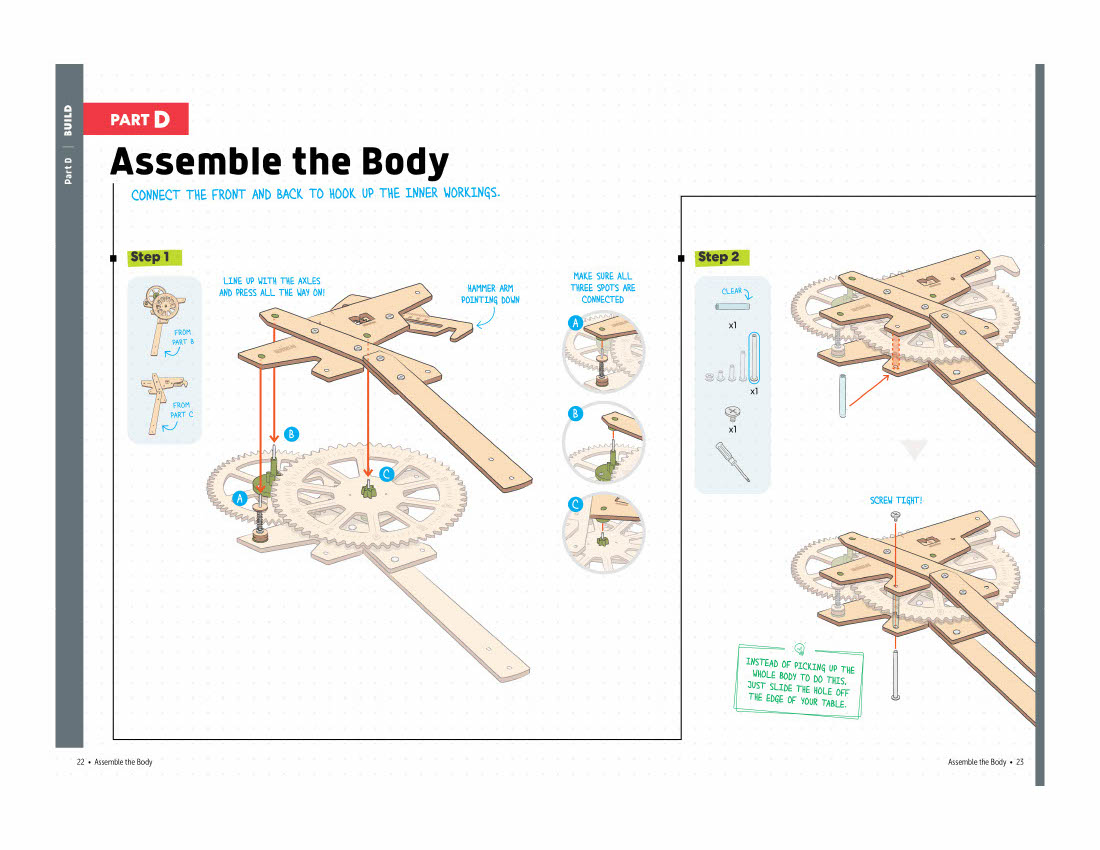“I’m giving up,” “This is dumb,” and “I’m not doing that” are common refrains heard from teenagers. But this wasn’t the case for a week in October in the Smart Lab at Imagine Prep @ Surprise, a prep school in Surprise, Arizona. What got these students to change their tune and be engaged with an assignment? They were engineering a gravity timer from KiwiCo’s Eureka Crate line.
Imagine Prep @ Surprise is a smaller prep school that its teachers describe as having a “family atmosphere.”
“Because it’s a junior high and high school, we’ve known some of [the students] for up to 7 years,” says Mr. James Mould, the Smart Lab Instructor at Imagine Prep @ Surprise. “You really get to know who they are, what they are, what they are about. Likes, dislikes, everything about them.”
Mr. Mould and his colleague Michelle Baker, lead teacher for all elective content areas, worked together to facilitate the KiwiCo kits with a class of 31 high school students, ranging from freshmen to seniors. Over about a week of classes, students got to work individually and in small groups to build the crates — all while exploring concepts such as gear ratios, pendulum time, and engineering design.
Mr. Mould explains that “in a group, especially that big, you are going to have some kids that are all gung ho about everything, and then you are going to have some kids who want to have nothing to do with it. And in this group, there was nobody in here who wanted nothing to do with it.”
Mrs. Baker elaborates, explaining that she “[got to see] a lot of those kids take the booklet and read, follow each step to a tee, and [look] at the diagrams and flip [them] if [they were] facing the wrong way or problem-solve.” She notes that ”they don’t do that with regular Google doc assignments” and that “they struggle to problem-solve on their own in a typical core classroom setting.”

With the help of the KiwiCo crates and the various ways they presented guidance through diagrams and step-by-step instructions, students were able to “take that initiative and do it on their own, [and] be dedicated to solving the problem.” “It was really cool to see some of the students that struggle in a more academic setting, [how they] were able to follow the directions … step-by-step and [be] excited to problem-solve and get it right,” Mrs. Baker says.

And the students weren’t the only ones benefiting from this style of instruction. Both Mr. Mould and Mrs. Baker identified potential benefits from the instructors’ perspective as well.

“For me, teacher-wise, I think [KiwiCo crates are] very simple, very easy to understand… both the wording and the visuals. You know, you have different types of learners and how they learn, so I think it kind of appeased both … angles to where either type of learner can grasp what exactly [the instructions are] looking for,” Mr. Mould explains.
“I also see potential benefits in doing crates like these cross-curricularly and not just within science, math, or STEM classrooms,” Mrs. Baker adds. “[Speaking from an English background], they have to write pieces of writing that tell you how to do something. Like, they have to know how to write directions [and] a step-by-step incremental type of writing, so I think them being able to follow that type of writing as well ties into the skills and outcomes that they will see in some of their other classes. Even though it’s not as hands-on, it’s still the same type of thing, just in a different format.”
All in all, both the students and teachers found their KiwiCo experience offered an engaging and interesting way to explore engineering — and a great way to build confidence as they make something from start to finish.
“I think something like this will allow that confidence to grow in a lot of them. And [they can] know and understand ‘oh hey, I can do that,’" Mr. Mould says.
For more information about KiwiCo products for high school students or other classroom environments, please reach out to the KiwiCo Education Team at schoolsgroups@kiwico.com.


